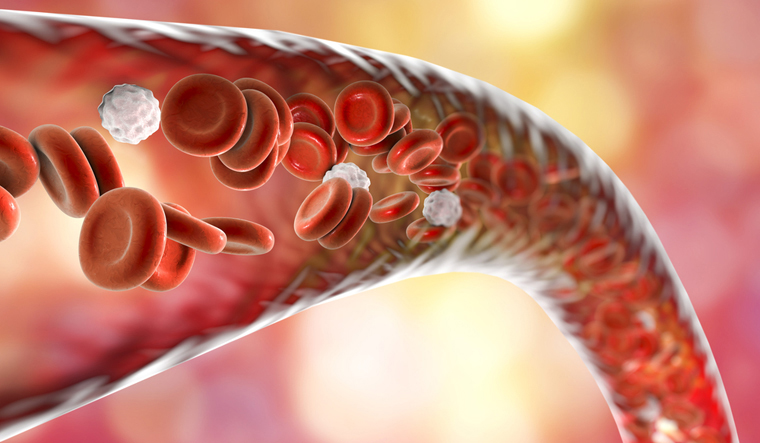Researchers have discovered an ingredient vital for proper blood vessel formation that may help develop better treatments for a host of serious conditions ranging from diabetes to heart attacks and strokes.
Scientists seeking to grow blood vessels have focused almost exclusively on growing only the inner layer of blood vessels, which are made up of endothelial cells.
The hope was that these endothelial cells would then recruit any other cell types needed to form a complete, functional blood vessel, according to the study published in the journal Nature Communications.
Researchers led by the University of Virginia School of Medicine in the US determined that those vessels can develop properly only if they are grown in conjunction with another cell type, known as perivascular cells, including smooth muscle cells and pericytes.
The researchers liken these perivascular cells to the outer support layers of a rubber hose or on automobile tires, without which they burst or leak.
"Most of the studies of angiogenesis (blood vessel formation) have focused on the inner lining of the pipes themselves," researcher Daniel L Hess said.
"That is fairly well understood. But it is really not well understood how you get a complete functional blood vessel that can withstand the mechanical force exerted by blood pressure," Hess said in a statement.
The researchers determined the vital role of the perivascular cells in blood vessel formation and to identify a gene, Oct4, that is required for this process.
Previously, Oct4 had been thought to be active only in embryonic stem cells during early development and to be permanently inactivated in adult organisms.
The researchers found that Oct4 has an important role in the formation of the vessels themselves—being required for forming the protective outer wall of blood vessels.
The researchers were able to examine blood vessel formation in real time. They found that vessels that lacked perivascular cell coverage formed incompletely and leaked blood.
"Multiple failed trials assumed the perivascular cells were just passive followers," said Gary K Owens, who led the study.However, without them, he said, "the whole process comes to a halt."
The study found that endothelial cells and perivascular cells communicate with one another via Oct4-dependent processes and, without it, functional non-leaky blood vessels or blood vessel networks cannot form.
This means that scientists must take a more sophisticated approach to growing new vessels, a process important in normal growth and reproduction as well as wound repair, researchers noted.


